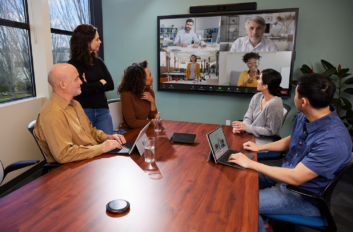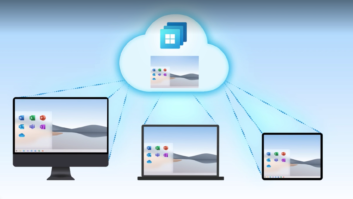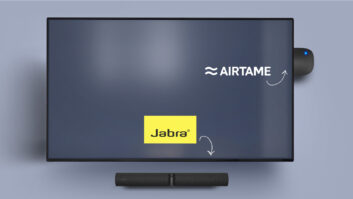Survey data from Biamp, a leading supplier of professional audiovisual solutions, has found common ground within the debate between the future of work across managers and workers. Although workers are spending more time in the office, managers acknowledge that the ability to work from anywhere remains a necessity, especially for those working on the road or in satellite offices, at least for part of the time.
Defined as where work is completed, either in the office, at home, or while traveling, both workers and managers agree that enabling hybrid work scenarios represents the best method to ensure productive work environments for the greatest number of employees. This is the key finding from 2,400 survey responses from across the globe regarding individual work preferences between “end users” and “decision makers.”
 In response, organisations must find and implement solutions that balance the needs of those in the office and elsewhere, creating meeting environments that are hybrid but equal. Chief among those solutions is effective hybrid conferencing technology for group meetings.
In response, organisations must find and implement solutions that balance the needs of those in the office and elsewhere, creating meeting environments that are hybrid but equal. Chief among those solutions is effective hybrid conferencing technology for group meetings.
Making hybrid meetings equal: survey findings:
- To achieve equality, end users noted the most important factors to a successful hybrid video conferencing meeting:
- Above all, meetings should be quick and easy—they should start without delay.
- Great sound trumps video – video conferencing solutions need great sound to be effective, even more so than video.
- After quality sound, end users expect quality video.
- In addition to being easy to setup, the software and hardware must be easy to operate during the meeting.
- Rounding out the most desired features, end users want the remote attendees to feel just as involved as those in the office conference room.
To address these pain points, organisations must continue investing in video conferencing technology that is not only easy to use but provides quality sound and video no matter where attendees are located.
Those challenges will become increasingly acute, based on end-user survey responses. During the past 18 months, three-in-four end-user respondents reported that their respective employers are asking for more in-person office time. It’s critical then for these organisations to provide the necessary tools for effective meetings in the office that involve people located elsewhere.
According to anecdotal feedback from decision-maker respondents, there is agreement that the office environment needs to change to properly address workers at home, in satellite offices, and while traveling. One stated bluntly, “the office environment needs a makeover,” while another said, “new ways of communication are needed, and a new working culture needs to be established.” Another suggested organisations should be, “providing a collaborative and supportive work environment that fosters teamwork and creativity.”
Despite these misgivings, most end-user and decision-maker respondents see the office as a main space for getting work done, but it’s up to business leaders to create and transform the office environment into spaces that reflect the realities and requirements of working from anywhere.
The report also identified the integration of AI into conferencing technology stacks, and at minimum, ensuring quality sound for all, as two keys for improving hybrid conferencing environments.
To review the full analysis of the data, visit the Biamp blog.







